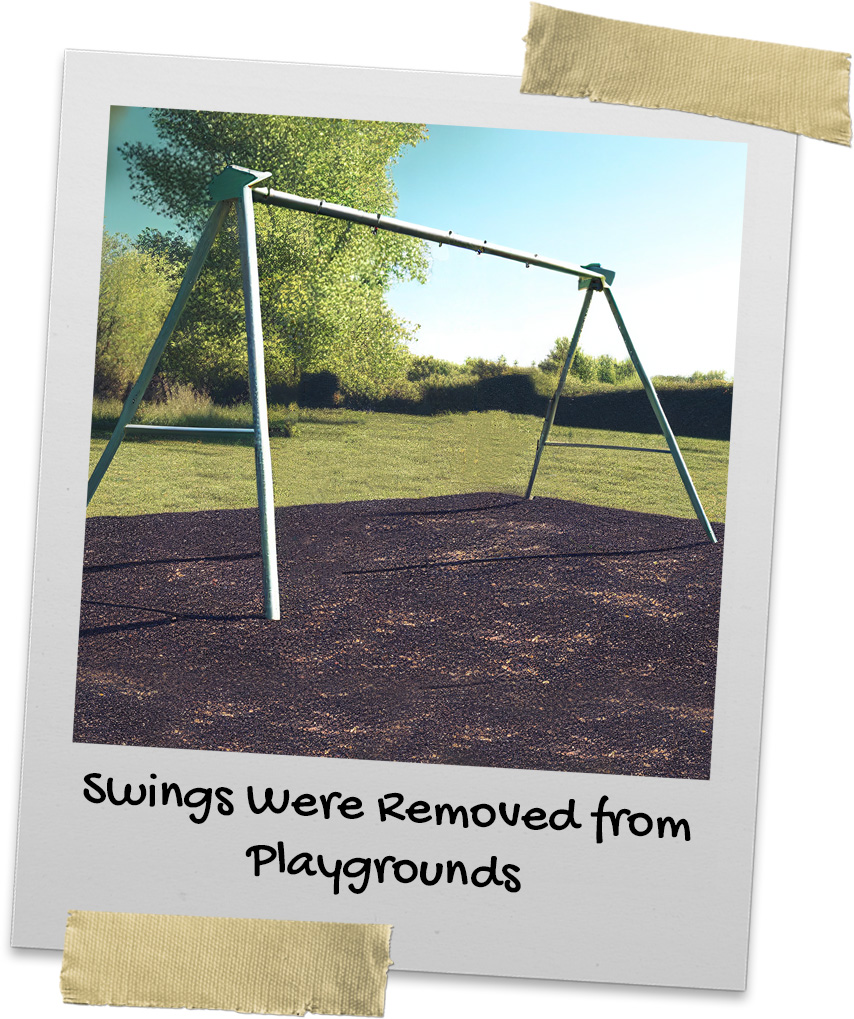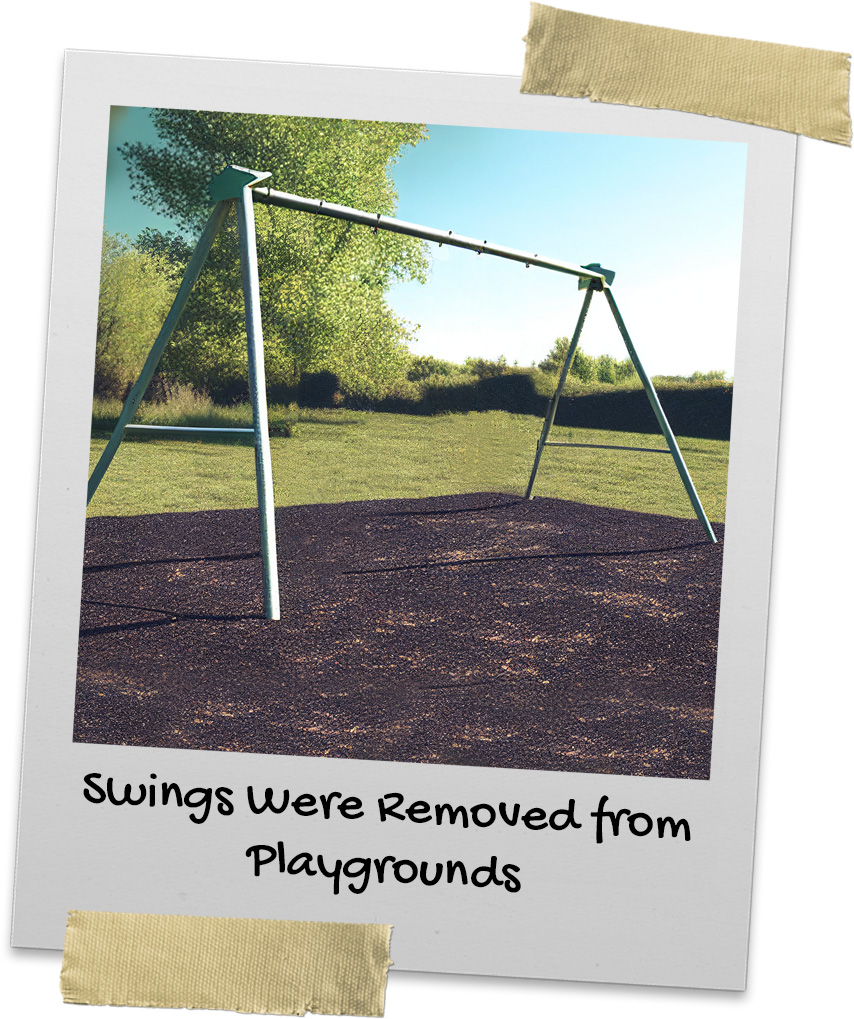Swings Were Removed from Playgrounds


The swing is the ultimate piece of playground equipment. Simply two metal chains connected to some reinforced rubber, but when hung from a metal bar, it gives those who have mastered the leg pump the ability to fly over and over (and over) again. And for little kids with a parent pushing them, it allows them to dabble with the feeling of being out of control, but returning to the comfort of their parent’s hands on the way back down. No physical exertion and blisters like the monkey bars, no rough rides like the spiral slide, and no nausea-inducing spinning like the merry-go-round. The swing is the place one can go by themselves and transport to a different world.
Or it used to be.
As the pandemic swept through the nation, schools were forced to make many difficult decisions to keep their students and staff safe, and this was one of the more preposterous ones: the swings had to come down.
The main concern was transmission of the virus through touching shared surfaces. Swings, with their chains and seats frequently touched by multiple children, were seen as high-risk areas for the spread of COVID-19. To minimize the risk of transmission, and to make more room on the playground for students to socially distance, many schools chose to remove the swings entirely.
As we found out eventually, the virus didn’t really spread through surface contact. At the time, that science wasn’t completely understood. However, the schools decided to play it safe and remove one of the main sources of joy from the playground. It was hard to blame them in the moment, but easy to criticize it now.
For many children, the return of the swings was a momentous occasion, a sign that things were slowly starting to return to normal. And as they swung back and forth, feeling the wind rushing through their hair, it was a reminder of their resilience and adaptability of kids.



